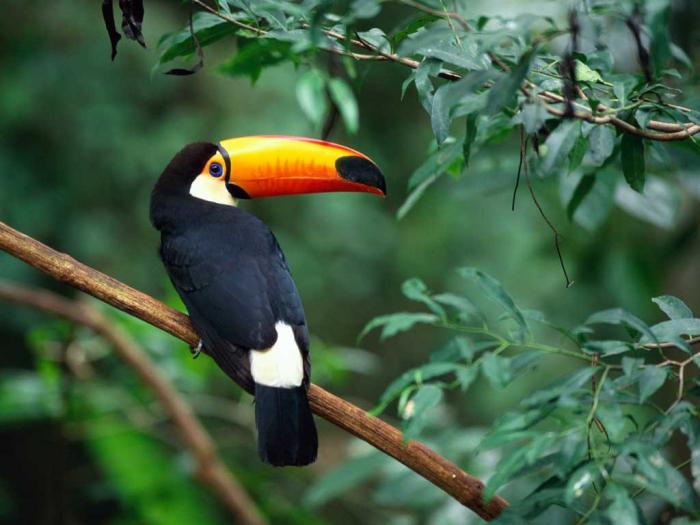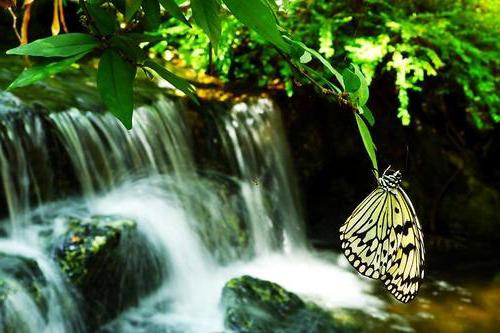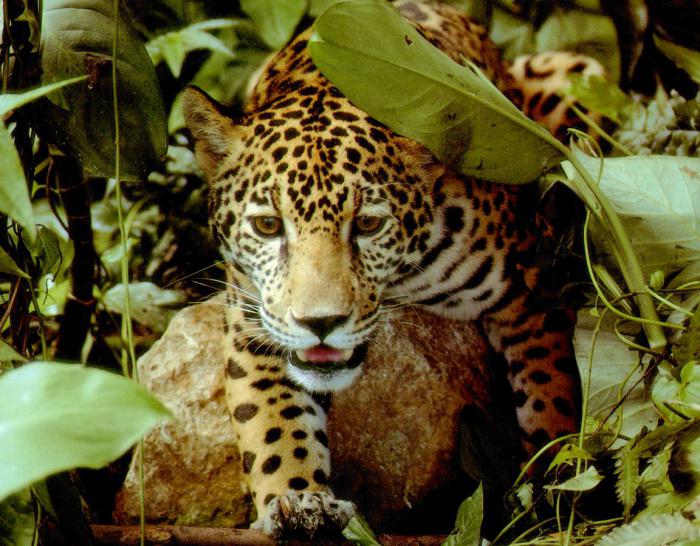The Arctic is one of the coldest and most lifeless regions on Earth. Includes part of Eurasia. Geographical position the arctic belt is bounded by the North Pole and the Arctic Ocean. There are common borders with the American continent. Often, the northern regions of the Pacific are referred to the water area of the belt, and the total Arctic occupies more than 27 million square kilometers.
Climatic zone
The meteorological indicators of this area are determined by the cold northern Arctic climatic zone dominates the entire water area of the Arctic Ocean, as well as on the outskirts of Siberia. Frosty weather in these parts of the Earth lasts all year round. Permafrost not warmed up by the sun's rays, as they fall on the ground tangentially.
We can say that the cold in the Arctic is constant. Even in summer time solar radiation unable to penetrate thick ice layers. The surface still receives a small amount of heat, but it goes to melting the snow cover. The Arctic climate zone is always characterized by subzero temperatures, and precipitation in this area is extremely rare. The reason is the minimal accumulation of water vapor due to the constant low temperatures. Average level precipitation does not exceed 200 mm per year.
Closer to the European part of the continent, it predominates. The main zone of its distribution is considered Eastern Siberia... Here the climate is less severe, suitable for life. Temperatures often rise to +12 degrees. Annual quantity precipitation is twice as much - up to 450 mm.
Large volumes of air in the troposphere, which have more or less the same properties, are called. The air mass covers an area of thousands and millions of square kilometers, extending upwards for several kilometers and even to the border of the troposphere. It is characterized by a general direction of movement, but inside this volume of air there may be different. The air mass acquires properties (temperature, dustiness or transparency) when it comes into contact with the underlying surface, over which it is formed. Moving over a surface with different properties, it heats up or cools down, moistens or becomes drier and gradually turns into another air mass (transforms).
The development of and is associated with atmospheric fronts.
Cyclone- vortex air movement with low pressure in the center and air movement against, from the periphery to the center. The passage of cyclones is accompanied by cloudy and rainy. In summer, they are associated with a slight decrease in temperature, in winter, its increase.
Anticyclone- vortex movement of air clockwise from the center to the periphery, with high pressure in the center. With the arrival of the anticyclone, calm, clear weather is established with high temperatures (in summer) and very low (in winter).
For transition belts characterized by the weather, determined by the air mass, prevailing in a given period of the year over this territory.
Each climatic zone of the earth differs from others in unique characteristics. Even such intermediate options as subarctic or subtropical have their own characteristics. They can define vegetable world or the conditions of farming. What exactly distinguishes the subtropical belt? Let's try to figure it out.
Where is he located?
The subtropical climatic zone lies in two hemispheres. It is located between the equator and the tropics. Due to the extremely favorable conditions for human survival, which the subtropical belt creates, it was on such a territory that the first ancient civilizations appeared. And Mesopotamia, and Palestine, and Greece are located in this strip. In addition, now these are the most best areas for tourism and agriculture: olives, grapes, citrus fruits and many other species grow here. 
Main characteristics
Subtropical belt characterized by low precipitation in summer - such conditions create high pressure areas and cyclones with frequent rains in winter. The temperature in the warmest month averages twenty-five degrees, and in the coldest - five. Summer is characterized by dry and hot weather with a minimum of clouds, while winters are quite windy and rainy. Such conditions provide a small amount of snow that does not linger for long. If the territory of the subtropical zone covers the highlands, the so-called cold desert climate occurs. It is distinguished by extremely cold winters with temperatures down to minus fifty and cool summers, unstable snows and strong winds. V eastern regions the belt is dominated by the monsoon variant. It is characterized by warmer and cloudy summers. Winter is getting drier. The subtropical belt, in which precipitation is usually scarce, here is characterized by an amount reaching almost a thousand millimeters. Because of this, lush vegetation grows in this area and agriculture develops well.

Territories
Where does this weather occur? The subtropical climatic zone covers a large territory of Turkmenistan, the state of Rajasthan in India, Afghanistan in the flat part, the pampas Iranian Highlands, Bukhara, the Xinjiang Basin, the Great Basin of South Australia.
Characteristic plants
The subtropical belt, whose precipitation is seasonal, is well suited for some species of flora. All vegetation can be subdivided into several types - hemigileia, monsoon, hard-leaved or Mediterranean forests. Each of them is accompanied by certain types of plants. Stiff-leaved plants develop in a special way so as not to depend on large amounts of water. The canopy of such a forest is located in one tier, with wide crowns. Stiff-leaved areas are accompanied by a dense undergrowth of evergreen shrubs. The trunks of trees branch out from the ground and are covered with cork or crust. The subtropical zone also includes the region. The main trees inhabiting such territories are beeches, magnolias, firs, bamboos, and all kinds of palm trees. Such a forest consists of many layers with dense undergrowth and vines. And finally, the hemihilea. These are evergreens in which vines and epiphytes are not very common. Conifers, ferns, oaks, magnolias, camphor laurels are widespread. 
Characteristic animals
The fauna of the subtropics is well adapted to climatic conditions zones of their habitat with hot summers, cool winters and possible droughts. Therefore, the activity of animals is often seasonal, tied to the moments of the most favorable combination of temperatures and air humidity. Ungulates such as mouflons and fallow deer can be found in this strip. Small predators of viverras also live in the subtropics, and bears are found in such a zone in the Pyrenees. Monkeys, jackals, wolves, porcupines, chameleons can be found in hard-leaved areas. Seed-eating animals are widespread - rodents, squirrels, dormouse. There are many different reptiles, and birds are represented by vultures, finches, falcons, linnet, goldfinches, great titmice. Ungulates such as gazelles are found in desert areas, or predators are common - tigers, leopards, cheetahs. There are many jackals and hyenas. On such a territory, you can find many birds, these are sparrows, and finches, and blue magpies, and marble teals, and mockingbirds, and wheats. Black vultures and griffon vultures are common. In areas of the Mediterranean, chameleons, geckos, lizards, and many snakes, including snakes and snakes, are common. The world of insects inhabiting the subtropics is also rich - butterflies, beetles, termites are found here in an impressive variety.
Subtropical climatic zones - geographic zones Northern and Southern Hemispheres the globe stretching between tropical and moderate belts... The terrain located in this belt is characterized by the alternation of temperate and tropical climatic regimes. This is explained by the seasonal rhythms of the general circulation of atmospheric air: in the summer, the subtropical zones are under the influence of the trade wind climatic regime, in the winter - under the influence of the cyclonic circulation of moderate air masses. The exception is the eastern outskirts, where summer monsoon precipitation is observed.
In the summer average temperature air is more than 20 ° С, in winter - more than 4 ° С. With the penetration of polar air masses, there is a high probability of frost and slight frost (up to -10 ° C). Above land in the subtropical zone level atmospheric precipitation and their regime varies considerably from coastal regions of the ocean to inland ones. This, together with an increase in the continentality of the climate in the same direction, is responsible for significant landscape differences in the characteristics of natural zones.
On the territory of each of the continents in the subtropical zones, three main regions are clearly distinguished: the western oceanic, or Mediterranean, with high humidity in winter; continental with insufficient air humidity all year round; eastern oceanic, or monsoon, with high air humidity in summer.
Natural zones of the subtropical belt
In the western oceanic region, the so-called semi-dry subtropics, there is a zone of stiff-leaved shrubs and forests on brown soils. In the Northern Hemisphere, after the zone of hard-leaved forests and shrubs, there are zones of subtropical steppes on gray-brown soils to the southeast. To the east, there are zones of subtropical semi-deserts and deserts of the continental region on gray-brown soils and gray soils. These are dry subtropics.
In the Southern Hemisphere in the continental regions of the subtropics lies a zone of subtropical steppes on gray-brown soils. In the eastern regions there are humid subtropics with evergreen broad-leaved forests, and in higher latitudes there are deciduous broad-leaved forests with an admixture of evergreen woody plant species on red soils, yellow soils and yellow-brown soils. In mountainous areas, the subtropical zone corresponds to forest-meadow (in humid areas) and forest-steppe (in dry areas) levels of altitudinal zonality.
On the territory of the CIS countries, there is a section along the upper border of the subtropical belt, therefore the nature here does not correspond to that typical for the subtropics. The subtropics occupy Black sea coast Caucasus, South coast Crimea, Colchis, Kura-Araks and Lankaran lowlands, Alazan valley and the southern outskirts of the deserts of Central Asia.
At the expense of economic activity humans in the subtropics, forests are often replaced by plantation and field landscapes. In the fauna, there is a joint habitation of species of temperate and tropical belts... Oceanic waters in the subtropics are characterized by relatively high temperature(15-16 ° C) and increased salinity of water. As a result of weak vertical mixing ocean waters the concentration of oxygen and plankton in them decreases. This is due to the small number of commercial fish.
Related materials:




